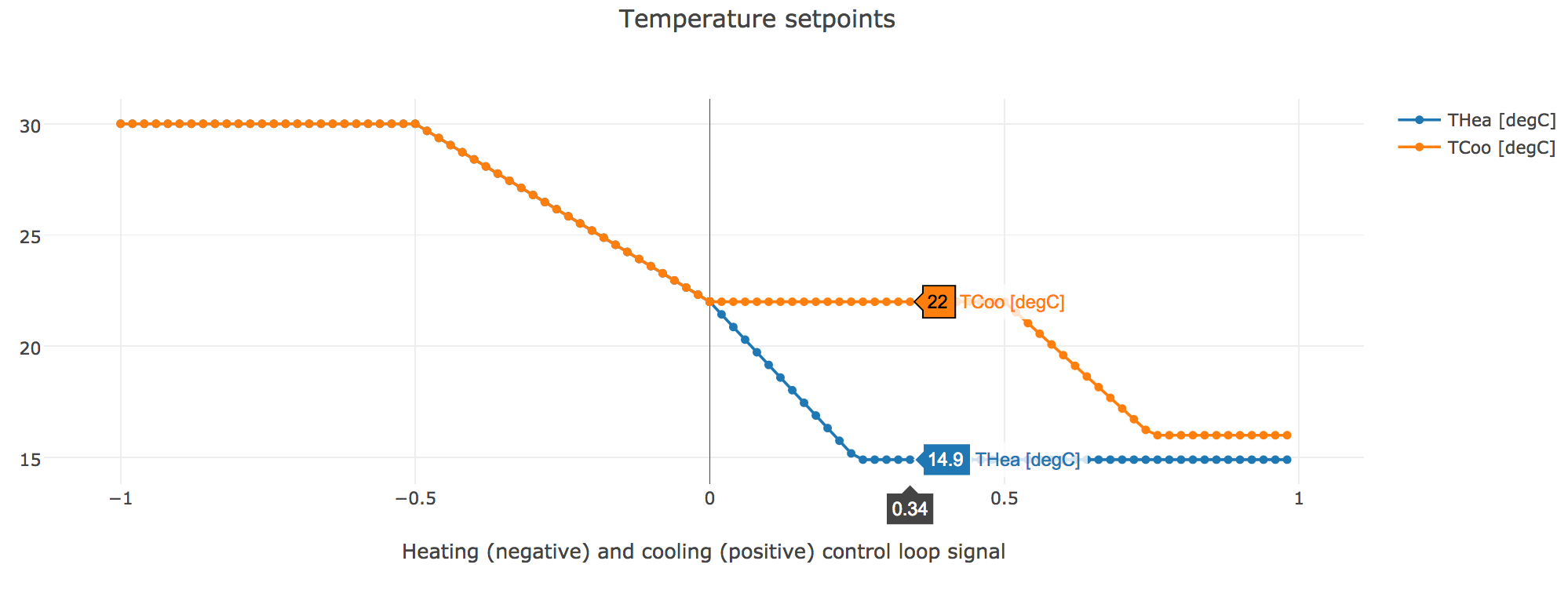Buildings.Utilities.Plotters.UsersGuide
User's Guide
Information
The package Buildings.Utilities.Plotters consists of models
that generate time series plots or scatter plots, and
save them in one or multiple html files.
The plotters allow for example to plot control sequences such as
the one shown below, which was generated from
Buildings.Utilities.Plotters.Examples.SingleZoneVAVSupply_u.

Usage
First, drag at the top-level of the model an instance of
Buildings.Utilities.Plotters.Configuration
and enter a value for its samplePeriod,
which is the frequency with which data will be written to the plots.
This global configuration block is required for the plotters to work.
This global configuration block also allows
to specify other optional global configurations that are by default
used by all plotter instances.
Next, to create time series or scatter plots, drag as many instances of Buildings.Utilities.Plotters.TimeSeries or Buildings.Utilities.Plotters.Scatter and connect them to the signals that you like to plot.
By default, all plots will be written to the file plots.html.
This file name can be changed with the parameter fileName,
either globally for all plots in the instance
Buildings.Utilities.Plotters.Configuration,
or for individual plotters in the respective instance.
Similarly, the sampling time, which is specified globally
in
Buildings.Utilities.Plotters.Configuration,
can be overwritten by each block.
Activating and deactivating plotters
For some plots such as for control signals, it makes sense to only plot
the data when the HVAC system is operating. To allow this,
the global configuration block, as well as each individual plotter instance,
allows to enable a boolean input port called activate.
Through the parameter activation, this boolean input port can be
enabled or disabled. If enabled, then the plotter is activated if the signal
at this port is true. If it is false, then no data will be sampled.
By default, the plotters inherit the activation from the global configuration.
Moreover, it may make sense to not plot data in the first few minutes after
the HVAC system has been switched on. For example, one may only want to plot
the mixed air temperature at an economizer 2 minutes
after the HVAC system has been switched on.
To support this, the parameter activationDelay can be set.
For example, if activationDelay=120 seconds, then
data will be collected for plotting only
120 seconds after activate becomes true.
As with the other parameters, the plotters inherit by default the
activationDelay from the global configuration,
but this value can locally be overwritten.
A local overwrite allows for example in an HVAC system
to not plot the mixed air temperature
for 2 minutes and not plot the room air temperature
for 30 minutes after the system has been switched on.
Various examples that illustrate the use of the plotters can be found in Buildings.Utilities.Plotters.Examples.
Implementation
The plotters write an html file with JavaScript that uses the plotly library to render the plots.
Extends from Modelica.Icons.Information (Icon for general information packages).
